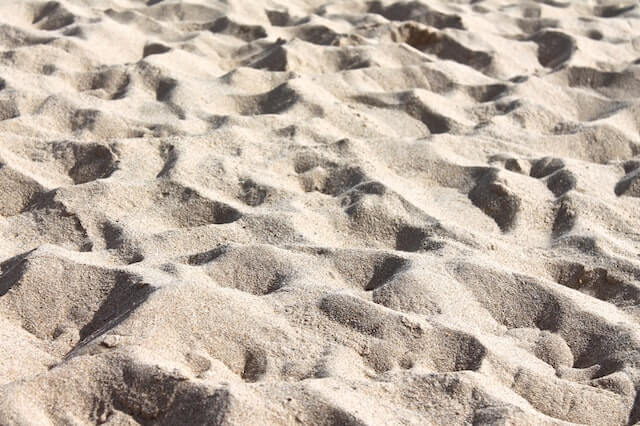What is M-sand | How is it manufactured? | Better than river sand | Characteristics of M-sand | Disadvantages | Types | Is it expensive | Price range for M-sand | Recent information | Construction Substrate | Conclusion
The need for sand has significantly expanded in recent years due to the fast urbanization and extensive scope of construction operations. Sand deficiency, however, is a problem experienced in many nations, including India. In this article, Let’s learn about M sand, manufactured sand.
Instead of using sand from rivers, the building industry in India is increasingly turning to synthetic sand. M sand’s low price and minimal environmental impact have made it popular among real estate developers in populous Indian cities like Delhi, Mumbai, Bangalore, Chennai, and Pune. These cities include Delhi, Mumbai, Bangalore, and Pune.
M sand meaning
Manufactured sand, or M sand, is created by crushing and grinding rigid materials like granite or boulders into finer and finer particles before being thoroughly cleansed and graded. The building industry is often used as a replacement for river sand in construction materials like mortar and concrete.

The manufacturing process of M sand, Manufactured sand
The three processes that make up the manufacturing process for M sand are as follows:
- Stones of varying sizes are crushed using VSI crushers to create aggregates in the first step of the process.
- The totals are then destroyed in a Rotopactor to produce the sand with the desired grain size.
- Both screening, which gets rid of larger particles like dust, and washing the sand, which gets rid of smaller particles like dirt, are done towards the end.
Related: Delhi Metro’s Magenta Line
What makes it better than river sand?
M sand has entirely different physical and mineralogical properties than river sand. The most prominent features of manufactured sand are as follows:
- This manufactured sand can be described as having a cube-like or angular shape.
- It has a granular and grainy consistency. Because of this, it is the material of choice for creating concrete.
- Between two and four per cent is the amount of water that can be absorbed by artificial sand.
- Because it is manufactured in a lab, it does not include too large particles.
- Compared to river sand, crushed sand contains a significantly lower level of contaminants.
- The density of the bulk material is 1.75 grams per cubic centimetre.
- The source rock sets specific gravity parameters for the manufactured sand, which are between 2.5 and 2.9.
- The maximum allowable limit of fines with a size less than 75 microns is 15 per cent.
- Because Zone-II can adjust its gradation, it is an excellent choice for concrete.

Is there anything good about M-sand?
The strong character of the concrete
- The ideal qualities of manufactured sand include the proper particle size distribution, particle shape, and texture.
- These characteristics give the concrete construction an increased capacity for withstanding force.
Superiority in the quality of the concrete
- The sand, which contains relatively few contaminants such as clay and dust, contributes to the production of concrete of higher quality.
- Manufactured sand can help eliminate common cement faults such as capillarity, permeability, voids, and capillary separation.
- These flaws can be reduced by using manufactured sand.
Durability of concrete
- As a result, the sand’s production process, which utilizes a specific grade of granite, possesses the appropriate chemical and physical properties to produce concrete structures.
- With its one-of-a-kind qualities, manufactured sand makes it possible for structures to survive the most severe weather conditions and protects reinforcement steel from rusting.
1. Better workability of concrete
- Workable concrete can be produced with manufactured sand because it allows for a lower water-to-cement ratio.
- It makes the concrete easier to work with, raises the strength of the finished product, and reduces the effort required to mix and lay the concrete, all of which contribute to increased productivity.
2. Economical
- There is no wastage because there are no contaminants in the system. In addition, the cost of transporting M sand is 30–50 per cent less than the cost of transporting river sand. This difference is significant.
3. Eco-friendly
- To collect river sand, dredging must be done, which poses environmental risks such as reducing the amount of usable water and compromising the stability of dams and bridges. Manufactured sand eliminates this necessity.
4. Other difference
- Using artificial sand can result in an increase of approximately thirty per cent in the strength of masonry.
- According to the findings of several studies, concrete produced with M sand has a compressive strength of 6–9 percentage points greater and a flexural strength of 12–15 percentage points higher than material produced with river sand of the same grade.
Related: Manufactured Sand: M Sand
M sand: Disadvantages
- Because of the angular grain or flaky particles that can result from poor crushing, the material is unfit for concrete manufacturing because of the potential for increased water and cement requirements.
- Because the price of manufactured sand is significantly higher than that of river sand, there may be regions of the country, such as West Bengal, that do not have adequate facilities for crushers. This may present a problem.
- Since the need for cement in high-rise construction projects dramatically exceeds that of river sand, it is impracticable to employ the latter in significant amounts to make the high-quality pumpable concrete necessary for the success of such projects.
What are the many M-sand types?
The following categories define the different kinds of manufactured sand:
- This particular variety of M sand is typically put to use in the production of concrete.
- The thickness of the granules, also known as the sieve size, is 150 microns, equal to 4.75 millimetres. It complies with the requirements of IS Code 383:1970.
- Plastering using M Sand: This particular variety of sand is used for tiling and wall plastering, among other applications.
- The granule thickness, also known as the sieve size, is 150 microns, equal to 2.36 millimetres. It complies with the requirements of IS Code 1542: 1992.
- This particular variety of sand is typically utilized for masonry work, such as laying bricks or blocks, and is denoted by the letter “M.”
The granule thickness, also known as the sieve size, is 150 microns, equal to 3.55 millimetres. It complies with the requirements of IS Code 2116: 1980.
Related: Mahabocw: Maharashtra’s Building Initiative
Is M-sand more expensive in India than river sand?
Compared to river sand, concrete built with M sand has a shallow level of permeability. When added to concrete, river sand’s permeability is superior to that of manufactured sand. M sand has a water absorption rate of 2-4%. On the other hand, river sand has a low water absorption rate (often between 1.5% and 3%).
What exactly is the price range for M-sand there?
Even though the government has set the price of sand at Rs 375 per tonne, the cost of transporting it ranges from Rs 5,000 to Rs 15,000 for each tractor load and Rs 30,000 per truckload. This is even though sand may be purchased at the current market price.
M sand newest updates
There has been talking of a new policy being drafted by the Tamil Nadu government to control the production and distribution of M sand. In January of 2021, the state’s Public Works Department presented the government with the state’s final draught of the M-sand policy. The plan’s goal is to increase the popularity of manufactured sand as a viable construction option. That is what the proposed method aims to do. After the mechanism is implemented, manufacturers will have to get permits based on the material quality. Observance of this stipulation will be required of all participants. It will also aid in controlling the industry and preventing any instances of adulteration or noncompliance with set norms.
Related: Assam’s Orunodoi Scheme
Is M Sand a suitable building material?
M-sand is beneficial to the building industry because it produces high-strength concrete that is also workable and durable. It has a coarse texture and a high concentration of micro-fine particles. These are both drawbacks. However, because it is environmentally friendly, cost-effective, and productive, M-sand is currently being utilized by most building enterprises.

Conclusion
That’s all about our discussion on the use of manufactured sand. The need for sand has grown in recent years due to a rise in construction activity and the prevalence of cities and factories.
In many countries, including India, sand deficiency is a concern. We had hoped that you would have been able to understand what it is that we are attempting to acknowledge.
Related: Understanding SGX Nifty
